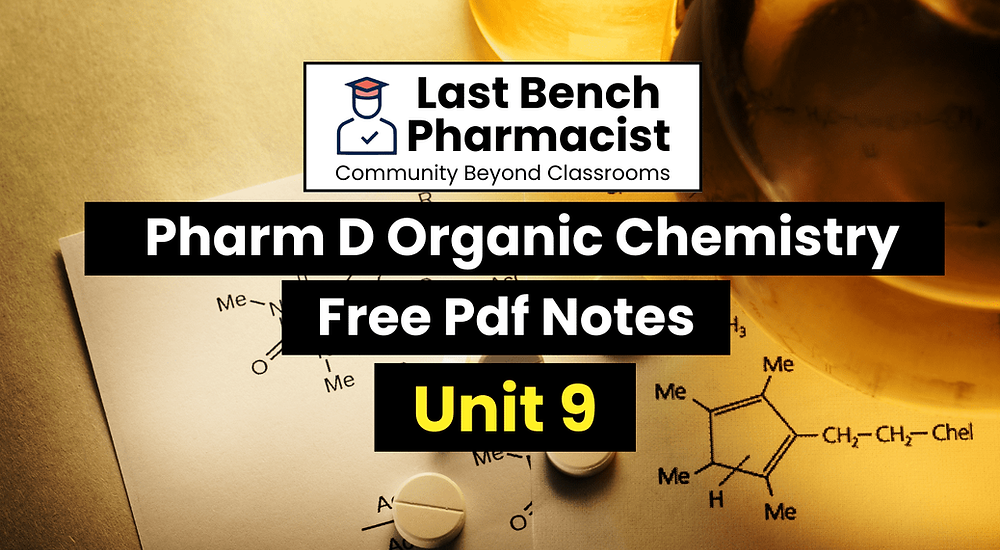



#pharmdnotes #pharmd1styearnotes #pharmdorganicchemistrynotes
Buckle up, pharmacy students, because Pharm D Organic Chemistry Unit 9 PDF Notes takes us on a captivating journey into the world of resonance and conjugation in organic chemistry! Imagine a molecule like a talented musician, able to exist in multiple “resonance structures” like musical notes. We’ll explore how this concept applies to allyl radicals and cations, understanding how resonance can influence their stability and reactivity. Brace yourselves for the concept of hyperconjugation, a stabilizing force involving adjacent σ and π bonds. We’ll then delve into how resonance and hyperconjugation affect nucleophilic substitution in allylic substrates, both for SN1 and SN2 mechanisms. Get ready to conquer vinylic cations and conjugated dienes, exploring how resonance influences their stability and reactivity. We’ll unveil the fascinating world of electrophilic addition to conjugated dienes, comparing 1,4- and 1,2-addition mechanisms and understanding the factors that govern their competition. Finally, we’ll tackle free radical addition to conjugated dienes, demystifying the factors that influence the orientation and reactivity of these reactions. So, pharmacy students, prepare to unlock the secrets of resonance and conjugation, and witness how they orchestrate a beautiful dance of stability and reactivity in organic molecule in Pharm D Organic chemistry PDF Notes!
Theory of resonance: Allyl radical as a resonance hybrid, stability, orbital picture, resonance stabilization of allyl radicals, hyper conjugation, allyl cation as a resonance hybrid, nucleophilic substitution in allylic substrate, SN1 reactivity, allylic rearrangement, resonance stabilization of allyl cation, hyper conjugation, nucleophilic substitution in allylic substrate, SN2 nucleophilic substitution in vinylic substrate, vinylic cation, stability of conjugated dienes, resonance in alkenes, hyper conjugation, ease of formation of conjugated dienes, orientation of elimination, electrophilic addition to conjugated dienes, 1,4- addition, 1,2-versus 1,4-addition, rate versus equilibrium, orientation and reactivity of free radical addition to conjugated dienes.